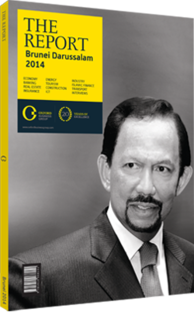Development plans are taking shape
Greater investment and a faster pace of new project launches should see Brunei Darussalam’s transport and logistics reinforced over the next few years, building on recent improvements to the Sultanate’s infrastructure. A series of reports earlier this decade identified deficiencies in Brunei Darussalam’s transport and logistics infrastructure chain that were seen as holding back economic development and diversification. A 2011 comparative study compiled by the Singapore-based Asia Competitiveness Institute on the economic strengths and weaknesses of the ASEAN bloc countries found that Brunei Darussalam had structural issues with in its logistics infrastructure, in particular its ports. In addition, the World Economic Forum (WEF) ranked Brunei Darussalam 57th out of 144 countries for the standard of its ports and 61st in terms of the competitiveness of its air services infrastructure in its “Global Competitiveness Report 2012-13”. It also noted that inadequate infrastructure was a major inhibitor to carrying out business in the country.
Turnaround
But new projects are now targeting some of these weaknesses while also building on existing strengths, boosting connectivity in the Sultanate and across the region. The increased flow through the project pipeline was reflected in the WEF’s “Global Competitiveness Report 2013-134”, which noted improvements in two out of the three key sectors. Though the study found that road infrastructure had slipped slightly in the ratings, to 35th overall, the quality of Brunei Darussalam’s port infrastructure rose from 57th to 49th globally, while for aviation the climb was nearly as marked, from 61st to 55th.
Building Links
Several years ago, the government laid out its infrastructure goals under Wawasan Brunei 2035, a long-term development plan aimed at diversifying the economy with a focus on public-private partnerships in infrastructure. One example of projects under the initiative is the transport master plan. This aims to overhaul the public transport system in a bid to develop a sustainable service network across rail, road and river. Another infrastructure project under way is the expansion of Muara Port. The extended wharf will allow larger container ships to berth and boost cargo handling capacity. There is also a focus on road connectivity between logistics hubs, including the 2.7-km bridge to link the Pulau Muara Besar port and manufacturing centre with the mainland. The Temburong Bridge and associated roadwork will connect Temburong District directly with the rest of the country.
Another infrastructure mega-project that is already under construction and will be the first of the bridges due to be completed in 2016 is the 607-metre Sungai Brunei Bridge. This will connect Jalan Residency in Bandar with Kg Sungai Kebun in Lumapas, and thereby help to reduce transit times between regions.
Bobby Chua, vice-chairman of building firm Swee, which signed a $139m joint venture contract alongside South Korea’s Daelim Industrial in 2013 to build the Sungai Brunei Bridge, said the transport developments will help open up the regions, bringing with them economic growth, tourism and trade. “Business will be generated along these corridors, showing that infrastructure projects such as these go a long way towards sustained growth in these regions,” Chua told OBG. “The Bruneian construction sector will have no shortage of projects in the next decade,” he added.
Aviation Lift-Off
The aviation sector is also benefitting from the surge in development. Alongside previous improvements, Brunei International Airport is in the final stages of further upgrades. When completed by early 2015, the $150m upgrade will see passenger handling capacity of the airport doubled to 3m a year, with a new arrivals and departure halls, luggage handling facilities and expanded parking.
Despite proposals, plans for a second runway have been put on hold for now, which could impose restrictions on air traffic in the years to come. If the Sultanate wants to develop into a transport and logistics centre in the future, a secondary facility may have to be built, as has previously mentioned by government ministers.
You have reached the limit of premium articles you can view for free.
Choose from the options below to purchase print or digital editions of our Reports. You can also purchase a website subscription giving you unlimited access to all of our Reports online for 12 months.
If you have already purchased this Report or have a website subscription, please login to continue.

